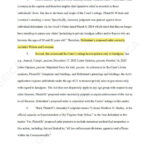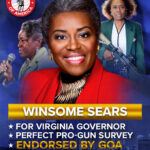
Republican politicians are generally more tolerant of openly armed supporters than are Democrats, who are more likely to be on the opposing side of people with guns, the records suggest. In July, for example, men wearing sidearms confronted Beto O’Rourke, then the Democratic candidate for Texas governor, at a campaign stop in Whitesboro and warned that he was “not welcome in this town.”
Republican officials or candidates appeared at 32 protests where they were on the same side as those with guns. Democratic politicians were identified at only two protests taking the same view as those armed.
Sometimes, the Republican officials carried weapons: Robert Sutherland, a Washington state representative, wore a pistol on his hip while protesting Covid-19 restrictions in Olympia in 2020. “Governor,” he said, speaking to a crowd, “you send men with guns after us for going fishing. We’ll see what a revolution looks like.”
The occasional appearance of armed civilians at demonstrations or governmental functions is not new. In the 1960s, the Black Panthers displayed guns in public when protesting police brutality. Militia groups, sometimes armed, rallied against federal agents involved in violent standoffs at Ruby Ridge and Waco in the 1990s.
But the frequency of these incidents exploded in 2020, with conservative pushback against public health measures to fight the coronavirus and response to the sometimes violent rallies after the murder of George Floyd. Today, in some parts of the country with permissive gun laws, it is not unusual to see people with handguns or military-style rifles at all types of protests.
For instance, at least 14 such incidents have occurred in and around Dallas and Phoenix since May, including outside an F.B.I. field office to condemn the search of Mr. Trump’s home and, elsewhere, in support of abortion rights. In New York and Washington, where gun laws are strict, there were none — even though numerous demonstrations took place during that same period.
Many conservatives and gun-rights advocates envision virtually no limits. When Democrats in Colorado and Washington State passed laws this year prohibiting firearms at polling places and government meetings, Republicans voted against them. Indeed, those bills were the exception.
Attempts by Democrats to impose limits in other states have mostly failed, and some form of open carry without a permit is now legal in 38 states, a number that is likely to expand as legislation advances in several more. In Michigan, where a Tea Party group recently advertised poll-watcher training using a photo of armed men in camouflage, judges have rejected efforts to prohibit guns at voting locations.
Gun rights advocates assert that banning guns from protests would violate the right to carry firearms for self-defense. Jordan Stein, a spokesman for Gun Owners of America, pointed to Kyle Rittenhouse, the teenager acquitted last year in the shooting of three people during a chaotic demonstration in Kenosha, Wis., where he had walked the streets with a military-style rifle.
“At a time when protests often devolve into riots, honest people need a means to protect themselves,” he said.
Beyond self-defense, Mr. Stein said the freedom of speech and the right to have a gun are “bedrock principles” and that “Americans should be able to bear arms while exercising their First Amendment rights, whether that’s going to church or a peaceful assembly.”
Others argue that openly carrying firearms at public gatherings, particularly when there is no obvious self-defense reason, can have a corrosive effect, leading to curtailed activities, suppressed opinions or public servants who quit out of fear and frustration.
Concerned about armed protesters, local election officials in Arizona, Colorado and Oregon have requested bulletproofing for their offices.
— Mike McIntire in At Protests, Guns Are Doing the Talking






